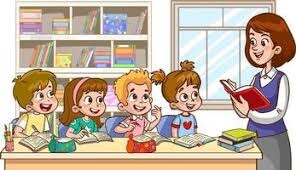Image

Contrary to the title above, I have reached the conclusion that the kids are NOT all right. Yet, because I have been watching the efforts being made to address their troubles, I am convinced the kids are going to be all right. Quite simply, if I am confident of the ultimate outcome of our youngsters’ collective struggle, the only productive view is to declare them all right.
Let’s start with the present situation, as viewed through a wide-angle lens of experience. After 24 years in a suburban public high school, where I taught the full-range of students – from Honors level sophomores and juniors to non-college bound seniors-- I thought any of the emerging deficiencies I was seeing would be ameliorated by college, or by the schools of hard knocks, whichever were in play.
The next 11 years as an administrator in a similar high school made me more certain the shortfalls in personal development that I saw among the kids were surmountable. I thought work ethic was diminished, and entitlement was more pervasive. But I also saw adaptability and creativity were the same, or even better among that group. I didn’t perceive a downward spiral.
My next five years were spent in small K-8 Catholic schools. The Covid era. While most public schools were in remote or blended school instructional models, these students were primarily in-person, in restrictive environments, but not sequestered. Even so, it was easy to see the impediments to development-- psychological, scholastic, and emotional – were becoming more debilitating. In 2021 and 2022, the K-3 students seemed to be behind in all areas, but especially in those skills that aren’t necessarily part of curricular guides. They didn’t know how to play, how to make up their own rules, how to tolerate the annoyances of their peers, or how to regulate their own emotions.
The 2023 school year confirmed the worst concerns for the same grades, but made clear that the range of affected children was broader than it originally seemed. The suppression and isolation had affected even those who weren’t in formal schooling of any kind. Moreover, those in the upper age range had not come close to fully recovering.
Yes, this sounds like quite a Debby Downer story.

Presently, I have a first-hand view of the state of the school-age generation in a public charter school. By definition, the clientele there is comprised of students likely to carry personal albatrosses. The parents who choose public charter schools make a decision to forego their neighborhood schools. I think it safe to say that this choice is based on perceived systemic barriers to learning. That is, the parents believe their home schools can’t serve their children’s needs. Sometimes the problem is the school itself; sometimes it is the family’s neighborhood, or sometimes, the culprit is domestic stresses that simply can’t be well-managed by that school.
So why in the world is there cause for hope or confidence? My simple but honest answer is that I believe in the teachers in our schools.
I have kept in touch with people from all my previous places of employment. The leaders in our classrooms have not wavered in their commitment to their students. A teacher from my first assignment soldiers on. He acknowledges that the profession has become more demanding, and harder to staff. Though these hardy veterans are faced with even more obstacles because schools can’t fully staff their programs, their spirit and skill remains impressive. They are encumbered by unfilled positions that can’t be covered simply by redistributing desks. Classrooms aren’t built for 40 students, in any school buildings.
Nevertheless, the teachers are determined. They work harder, longer, smarter, and under more scrutiny. Yet any conversation ultimately lands on a story about those instances where the students are inspiring in their efforts. Yes, teachers are more tired, and under duress. As a result, parents and the public should hold them in the highest esteem. So should those of us who no longer have students in school. Remember when your children were between years 4-18? How would you like to spend each day trying to get them to do things that were tricky, difficult, or beyond their current ability? That is what teaching really is. Every day.
The teacher I have touched base with from my days as an administrator is an emotional support teacher. This means his caseload is made up of those students who struggle the most in the face of challenges. Their students are often prone to melt-downs, incapacitation, depression, and destructive anxiety. They are also often impulsive, daring, or reticent – sometimes all of these at once. Somedays the demands are simply way too much, but those days are buffered by the days where they are just regularly too much.
So my optimism is bolstered by the basic fact that this talented, resourceful, and effective teacher returns daily to prop up the students who need the assistance. I have no reason to expect that his efforts will fall short in more than a very few cases. I can say this because I have met the success stories in the past 41 years of education. As in most areas, we obsess over our failures, but the objective fact is that teachers mostly succeed. Schools and the outside world are eventually teammates, and nothing is a better teacher than necessity.

The first Catholic grade school where I worked has been re-purposed. It now serves students from K-8, but in a Classical Catholic constitution. I have no direct contact with former employees, because the old school was closed, but I have encountered current patrons. The students are enthusiastic and happy. No, these are not the majority members of the student body throughout the country, but they are part of the total picture, and so a source for optimism.
The second Catholic school at which I most recently worked is also demonstrating a bit of surge in enthusiasm. The deficits of the pandemic era have not disappeared, and recovery is not complete. However, current teachers, students, and families express a less anxious status. No one is pretending smooth sailing is a sure bet, but the raincloud that seemed to follow overhead has dropped its measure of precipitation and has moved along.
So, I would like to focus on the most recent observation at the public charter school where I go to work.
In September, when I started as an LTS English teacher, I thought the general environment was extremely challenging. The kids weren’t patient, quiet, resourceful, or determined. They often didn’t even consider doing homework, and much of their demonstration of skill was below what I had expected. However, some of these observations were built on my own challenges. Having not presented lessons, or run a classroom, in more than 15 years, I now believe I let my own deficiencies in skill with presentation influence my assessment. In other words, I think I was blaming the kids for my weaknesses and faults.
I focused on the frustrations and limitations I was experiencing, instead of noticing how many students were learning and progressing despite my rusty teaching tools. While I was annoyed at the clunkiness of using e-texts and digital resources, the students were acing lessons almost despite me.
The cause of some of the struggles, especially among my most reluctant learners, as well as the lesser-capable, was the volatile combination of the teacher’s weaknesses and the student’s frustrations. They were going to be challenging learners no matter what, but the teacher’s weaknesses and frustrations created an exponential quagmire.
Again, you may be wondering why I can say, The Kids are All Right!?
Most of the teachers are far better than I was during my short stint. All of them are more adept with the latest generation of tools. In addition, schools are inching closer and closer to closing all the cracks for students to fall through. The systemic improvement of special education programs – in all ways and areas – is making sure the identified students are more and more capable upon graduation. Most schools are getting more and more adept with MTSS (multi-tiered systems and supports) programs, so that the invasive barriers to learning that society has imposed on schools are also being noted and reduced.

But the biggest thing is just the quality of the teachers. Yes, schools are beset and the students as a whole have a worrisome reduction in resilience. In simple terms, students just don’t handle adversity as they seemed to do when I started back in 1984. Not that I am endorsing some of the foolishness of life in the 70s, I remember practicing football in 90+ degree heat in high school, with perhaps a single water break in two hours. No one complained overtly, though we were all screaming bloody murder in our heads. By contrast, I had a student melt recently because he left his water bottle in the classroom when he transitioned to art class, all in a climate-controlled building. To add insult to injury, the parent screamed at me when I tried to explain that a 2nd grader couldn’t travel independently between two buildings when there was a working water fountain outside the art room. Seems filtered public water is simply poison.
So let me describe what I see now, in March, in a K-4 campus setting. First and second graders now move from regular classrooms to their specials classes in reasonably quiet and orderly lines. Most lines are straight and quiet, though the students are still in primary grades. Even in the Wilson Reading class I covered a few months ago, the 2nd graders with reading struggles were able to practice their fundamental phonics lessons, and to improve their decoding skills with clarity and efficiency.
I have known teachers, especially through the past six years, who hold down two jobs and raise families, carrying the weight of low pay because they are persistent and stubborn in helping their students meet the developmental goals.
This is an aside, and not part of the primary focus of this piece, but I think we must filter through the prejudices and biases that drive the conversation.
We have been told through the entirety of my teaching career that US students are failing and falling behind. And yet our economy has proven to be the most resilient, and our job market - as evidenced by the job numbers – has been capable of agility and adaptability. Perhaps the metrics that suggest our schools are falling behind are not measuring all the important things?
I remember telling students in the 90s and 00s that the jobs they would be doing hadn’t been invented yet. That is even more true today. And our clunky, inefficient, standards-based monolith is objectively huffing and puffing to keep up. I wonder if the reason for our positive elements are precisely attributable to our teachers.
The kids are going to be all right. And so, the kids are all right. Yes, we need to be vigilant, and we need to work hard to recruit quality teachers who are the primary difference makers. We need to find the balance between keeping the system accountable, and teaching to the standardized tests.
Because I continue to see remarkable teachers who love their student and who are teaching the most important lessons-- you are smart; you are kind; you are important – I am confident that our system will survive.
* Philip Repko is a career educator in the PA public school system who has been writing for fun and no profit since he was a teenager. Phil lives with his wife Julie in Gilbertsville and is the father of three outstanding children, two of whom are also poets and writers. He vacillates between poetry and prose, as the spirit beckons, and is currently working sporadically on a novella and a memoir.